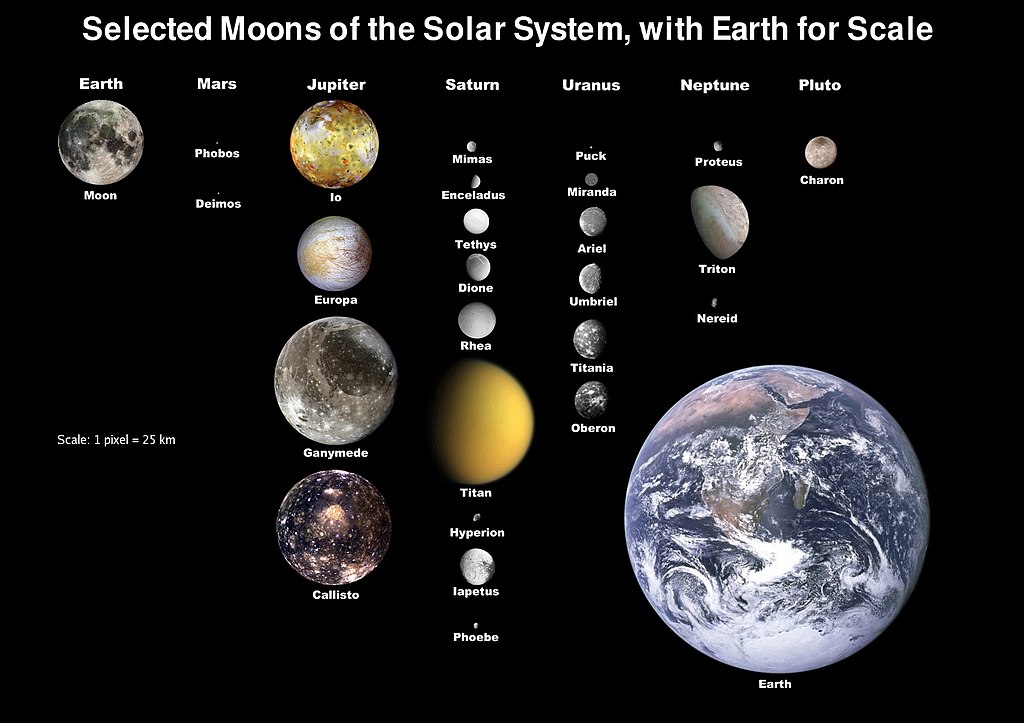
Caption: Especially interesting moons of the Solar System shown to scale with the Earth for comparison.
They have been selected for large size or some other special feature of interest.
The displayed moons (in order of increasing mean orbital radius) for each parent planet or other astro-body are given below with mean diameter in some cases and size order for the largest ones (in brackets):
- Earth: Moon (3474, 5th).
- Mars (see Martian moons): Martian moons Phobos (22.2 km), Deimos (12.4 km). The Martian moons were discovered by Asaph Hall (1829--1907) in 1877. The tidal force is causing Phobos to inspiral to its eventual doom and Deimos to outspiral (see Wikipedia: Martian Moons: Characteristics).
- 243 Ida (an asteroid asteroid belt): Dactyl (about 1.5 km).
- Jupiter (see Jovian moons, Galilean moons): Io (3643, 4th), Europa (3122 km, 6th), Ganymede (5268 km, 1st), Callisto (4821 km, 3rd).
- Saturn: (see Saturnian moons): Mimas, Enceladus, Tethys, Dione, Rhea (1528, 9th), Titan (5152 km, 2nd), Hyperion, Iapetus (1469, 11th), Phoebe.
- Uranus (see Uranian moons): Puck, Miranda, Ariel, Umbriel, Titania (1577 km, 8th), Oberon (1523 km, 10th).
- Neptune (see Neptunian moons): Proteus, Triton (2707 km, 7th), Nereid.
- Pluto (ex-planet, dwarf planet, see Plutonian moons): Charon (1207 km, 12th).
- Eris (dwarf planet): Dysnomia (of order 300 km).
See also Wikipedia: Natural Satellites and Wikipedia: List of the natural satellites.
Credit/Permission: NASA,
2005
(uploaded to Wikipedia by
User:SG,
2007) /
Public domain.
Image link: Wikipedia.
File: Solar System file:
interesting_moons.html.